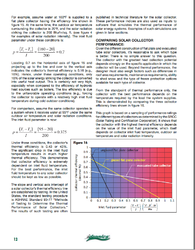I considered posting this to the green room but because it involves the P/S system, I thought it was appropriate for this forum.
This is really a question of whether it is a practical idea. I've read forums on solar space heating and the temperatures attained from solar arrays seem as though they'd be worth the effort. What I imagine is a large array with a controller that turns on a circulator from the heat exchanger only when temps exceed that of the primary loop. The wood/biomass would raise the temperature in storage to practical heating levels but from a higher starting temperature. If a large number of btus can be attained passively, then why not?
Note: this would be a DIY project as purchased solar arrays are too expensive for my wallet. The array would use glycol, hence the heat exchanger.
This is really a question of whether it is a practical idea. I've read forums on solar space heating and the temperatures attained from solar arrays seem as though they'd be worth the effort. What I imagine is a large array with a controller that turns on a circulator from the heat exchanger only when temps exceed that of the primary loop. The wood/biomass would raise the temperature in storage to practical heating levels but from a higher starting temperature. If a large number of btus can be attained passively, then why not?
Note: this would be a DIY project as purchased solar arrays are too expensive for my wallet. The array would use glycol, hence the heat exchanger.



